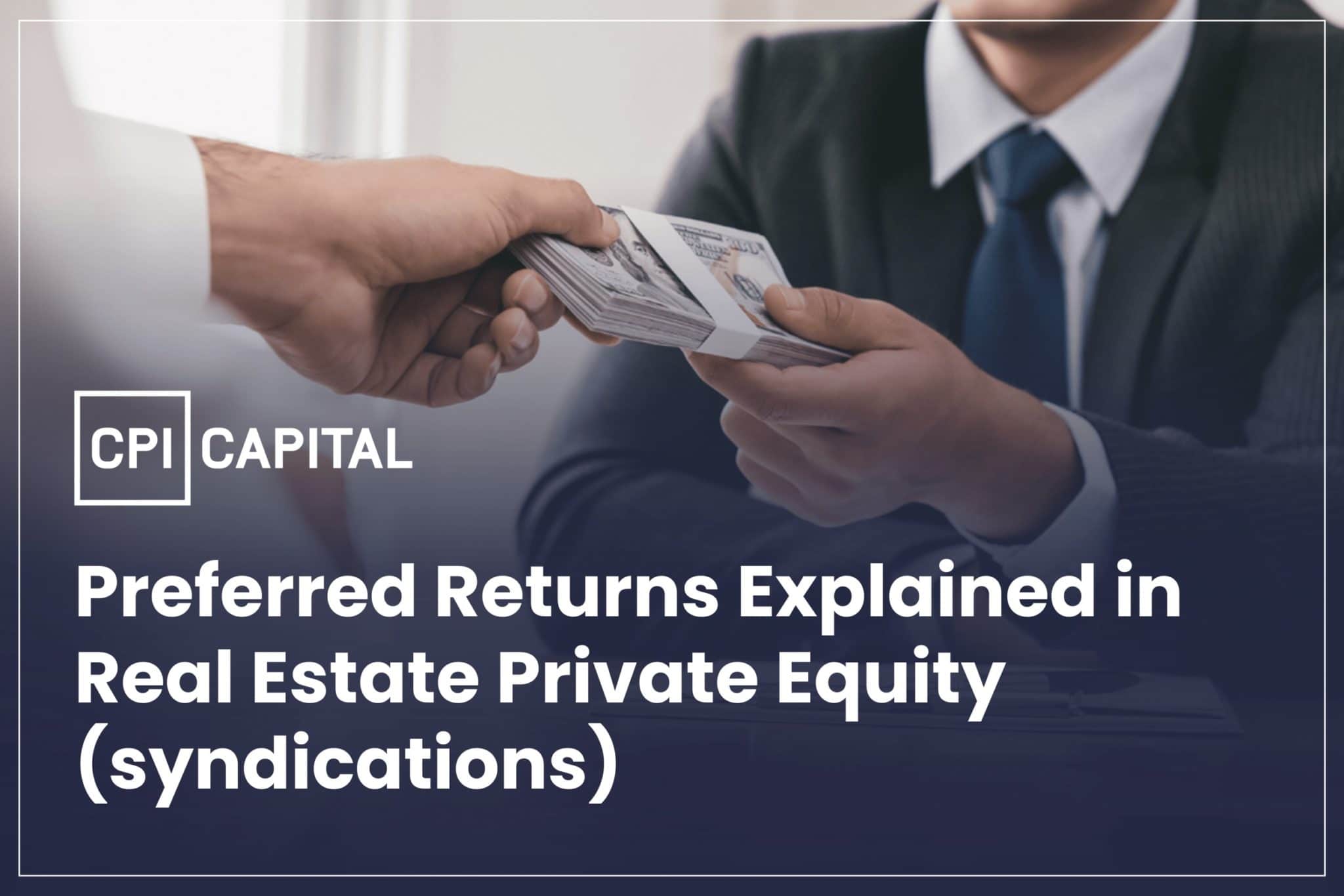
In any REPE deal there will be a variety of equity investors as well as various levels of debt associated with the project.
Accordingly it stands to reason that there will be different levels or priorities of investment returns, one of which is the “preferred return” (or sometimes simply known as “pref”).
Fundamentally, a preferred return is a way to protect the capital of limited partners (“LP”) in a real estate deal, as it is they who inject the majority of the money into a project. The preferred return is also an excellent way for a GP to show preferential treatment to its passive investors and confirm that interests are aligned by allowing them to receive the first proceeds of all cash flows.
There are many considerations when implementing a preferred return, which can be structured in dozens of different ways and there are, as you might expect, a variety of different terms in use for such pref. Sometimes it is called an “investment hurdle” or “waterfall arrangement” or “first money out” but the concept is still the same: essentially it is a way for capital investors in a deal to get paid first
What is the typical hurdle for a preferred return?
Many sponsors structure their transactions with a so-called “waterfall” arrangement with the first “hurdle” being a, say, 8% preferred return, where LPs receive 100% of profits until an investment reaches an 8% return and then any remaining capital will be allocated to other partners such as LPs or GPs. A range of 6-10% is not uncommon, with the split usually based on ownership percentages or amounts stated in the legal offering documentation.
After the first hurdle, most transactions are structured as a 70/30 split, although other splits are not uncommon.
What are some of the key terms to consider relating to preferred returns?
- Preferred return hurdle(s): is the specific amount which needs to be achieved in a given capital-out event such as refinancing or a sale and before distributions are made to LP’s or GP’s, and is typically in a range of 6-10%;.
- Preferred equity investment: is a variation of a preferred return and refers to a situation where as a result of a capital-out event, a preferred equity investor will get a return of capital including a defined percentage return on their initial investment before any of the other investors receive funds;
- Waterfalls: refer to the type of preferred return known as a “waterfall capital structure” which determines how returns are paid out to various classes of investors in a REPE deal. A preferred return may be the first step of a waterfall, but then there are many levels following that that require consideration as to how and when they flow to specific investors—hence the waterfall analogy;
- Cumulative or noncumulative preferred returns: cumulative means that the preferred returns accumulated in one period which have not been paid by the end of the period can be carried forward to the next period. For example, if in one year there isn’t enough net cash flow to cover the preferred return, perhaps due to deferred maintenance or a large capital cost, then the outstanding preferred return may accumulate the following year.
Non-cumulative simply means that the preferred return resets every period and no funds are carried forward. - Compounded or non-compounded (simple) interest: if a preferred return is compounded, the calculation involves the amount of invested capital plus all the previously earned but unpaid amounts.
Non-compounded simply means that the preferred return is only paid on the invested capital—and this is much more common than using compounded interest; - Pari-passu preferred returns: literally means like with like and is where both the capital partners and GP or sponsor are treated on equal basis until a specific return has been reached for each party. After that, depending on the structure of the deal, new capital flow rules will apply and the sponsor’s promote may take effect for remaining profit distribution above and beyond the preferred return threshold;
- Catch-up provisions: means that the capital investor receives all the returns until a certain threshold or preferred return has been met. Thereafter, all investment returns go to the GP until a pre-determined threshold has been achieved so the GP essentially catches up!
- Looking-back provisions: applies if, at the end of the established return period, a specific return has not been achieved, then the GP will typically give up some of their returns to the capital/limited partners.
In practice there isn’t a single industry standard when it comes to preferred returns in real estate, either in terms of percentages or the way hurdles and return distributions are structured.
Accordingly, it’s up to REPE investors such as CPI Capital to work out the best, most equitable structures for all parties involved in the investment..
Obviously, the overall aim is to always secure the best returns for our passive investors and, indeed, we aim to be creative when structuring how capital flows from a particular real estate syndication deal. Having said this, it’s worth noting that not all GP’s or projects offer preferred returns to passive investors.
A preferred return gives additional certainty to capital investors that they will receive a standard and guaranteed rate of return on their money, in addition to the other benefits of the real estate deal such as capital appreciation and/or refinancing or capital out scenarios.
Just another few reasons why REPE investments or syndicated real estate investments are so lucrative and appealing to passive investors!
Yours sincerely
August Biniaz
CSO, COO, Co-Founder CPI Capital

Ready to build true wealth for your family?
It all starts with passive income. Apply to join the CPI Capital Investor Club.
Search
Recommended
